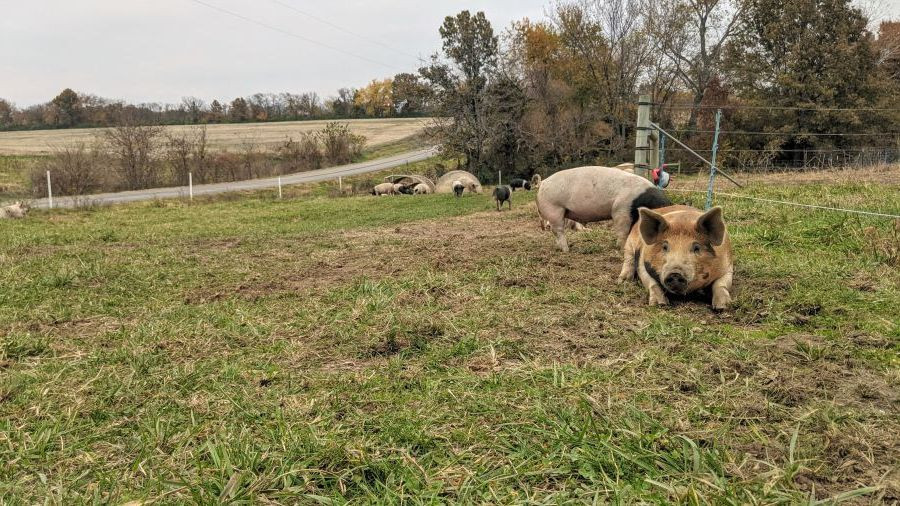From the Foreman's Desk - May Update Pt. 2
posted on
May 24, 2022
I've always enjoyed the presence of animals. Something cute and cuddly to play with. Especially furry animals. But recently, I've been branching out and enjoying some of the feathered pets too!
Last week Remi and I brought home two bunnies, six ducklings, and one adorable basset hound.
The bunnies were a birthday gift from my youngest brother. He really does give some of the best gifts. He's the brother that gifted me the goats as a wedding gift! They're doing great, too, munching on whatever looks good in their paddock.
David's Pasture hosted our first farm event of the year last weekend, and it was great!
We didn't have any chicks in the brooder for the farm tour, and we wanted to make sure there were fluffy birds available for the kiddos to pet, so we brought some ducklings home from a friend who hatches birds on their farmstead!
It was a win-win because I wanted some ducklings to have on the farm 😁
These are Muscovy ducks. I can't wait to watch them waddle around.

This is Smokey ♥

I couldn't get my picture of Panda to load. He looks very similar but has black hair.

This handsome fella is Jack 😍 He's our new little buddy. He loves attention and loves to follow you around the farm. He's "helped" me work in the garden, load the delivery van, take care of the other animals, and is just a soft, squishy companion to have around when you need a warm hug. His floppy ears are the cutest!


He likes to be right by your side 💕
I'm starting to get some red berries in my raised beds! Last year I never got that far because the goats gave the plants a nice "trim" (aka they ate them all) before they got to this stage.
The chickens like to get in my raised beds and scratch around. I'm pretty sure they're knocking the berries off the plants 😒 Jack told them to leave the other day, so hopefully, they got the memo.

Corn is coming up really well too. I'm growing sweet corn and dent corn. The dent corn will be used for grinding into cornmeal and will grow up to 10 feet tall 😮
I'm hoping to grow pole beans on the corn stalks—a little synergy in the garden. I won't be able to do the three sisters method, but for now, it will just be two sisters!
On another note, one-day ground shipping is live on the website! This is available to those whose zipcode is not in our local home delivery zone. Now we will be able to reach more people in East Kansas and West Missouri!
Remi has been working really hard to get this ready. Lots of hours spent researching boxes, liners, ice packs, and the best way to go about it for our company!

This weekend we are planning on doing some yard work. We're going to be painting the white picket fence around the farmhouse. Yay! It shouldn't be too big of a task. Remi's mom, Kim, and Reeves started on it last year so we're just finishing it up.
Afterward, we'll end the day with a friendly game of softball at the park. 😃
I hope you have a great weekend too!
Kaitlyn Kesten



